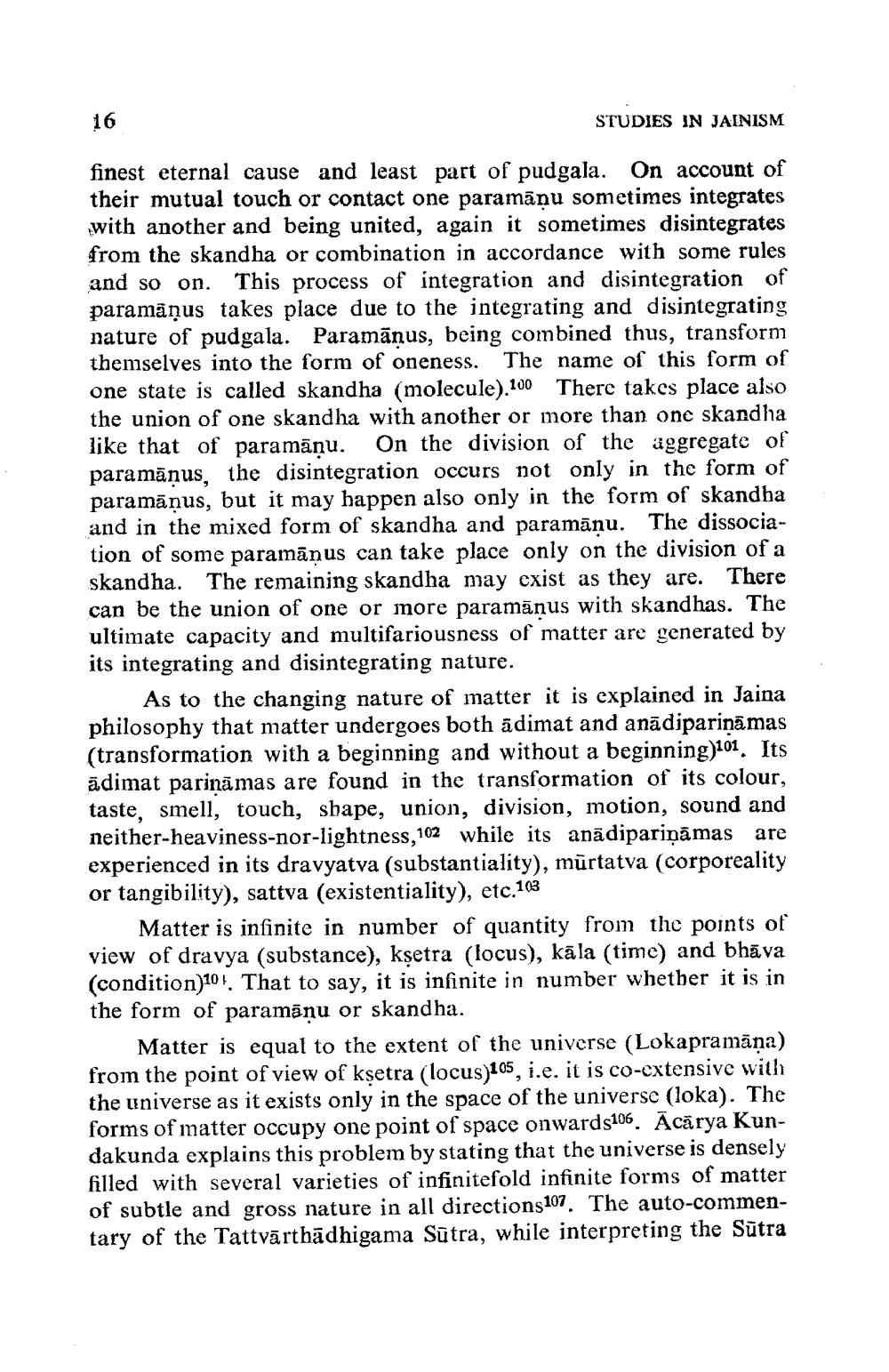________________
16
STUDIES IN JAINISM
finest eternal cause and least part of pudgala. On account of their mutual touch or contact one paramāņu sometimes integrates with another and being united, again it sometimes disintegrates from the skandha or combination in accordance with some rules and so on. This process of integration and disintegration of paramāņus takes place due to the integrating and disintegrating nature of pudgala. Paramānus, being combined thus, transform themselves into the form of oneness. The name of this form of one state is called skandha (molecule).100 There takes place also the union of one skandha with another or more than one skandha like that of paramänu. On the division of the aggregate of paramāņus, the disintegration occurs not only in the form of paramāņus, but it may happen also only in the form of skandha and in the mixed form of skandha and paramānu. The dissociation of some paramāņus can take place only on the division of a skandha. The remaining skandha may exist as they are. There can be the union of one or more paramānus with skandhas. The ultimate capacity and multifariousness of matter are generated by its integrating and disintegrating nature.
As to the changing nature of matter it is explained in Jaina philosophy that matter undergoes both ādimat and anādipariņāmas (transformation with a beginning and without a beginning)101. Its ādimat parināmas are found in the transformation of its colour, taste, smell, touch, shape, union, division, motion, sound and neither-heaviness-nor-lightness, 102 while its anādipariņāmas are experienced in its dravyatva (substantiality), mūrtatva (corporeality or tangibility), sattva (existentiality), etc.103
Matter is infinite in number of quantity from the points of view of dravya (substance), kşetra (locus), kāla (time) and bhāva (condition)104. That to say, it is infinite in number whether it is in the form of paramāņu or skandha.
Matter is equal to the extent of the universe (Lokapramāna) from the point of view of kşetra (locus)105, i.e. it is co-extensive with the universe as it exists only in the space of the universe (loka). The forms of matter occupy one point of space onwards106. Ācārya Kundakunda explains this problem by stating that the universe is densely filled with several varieties of infinitefold infinite forms of matter of subtle and gross nature in all directions 107. The auto-commentary of the Tattvārthādhigama Sūtra, while interpreting the Sūtra




